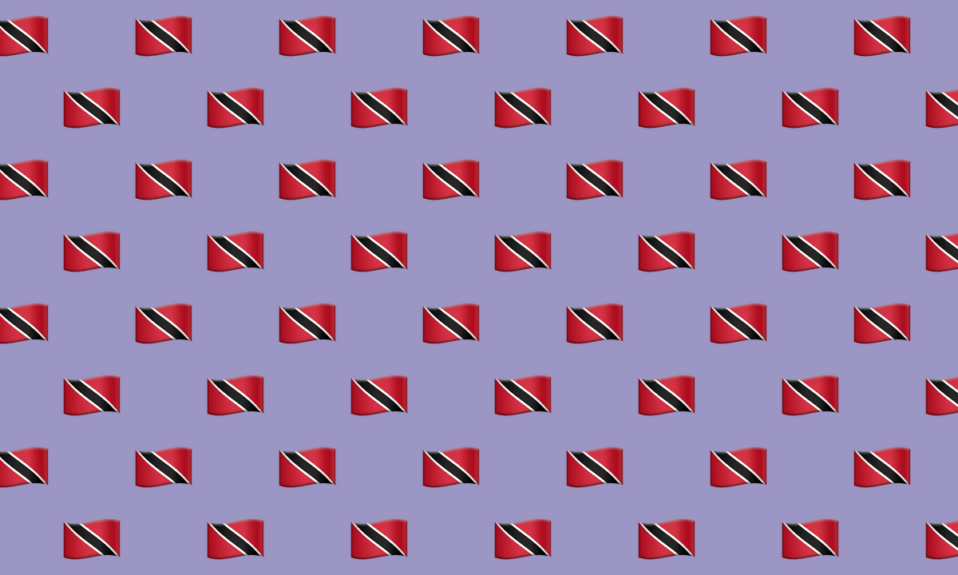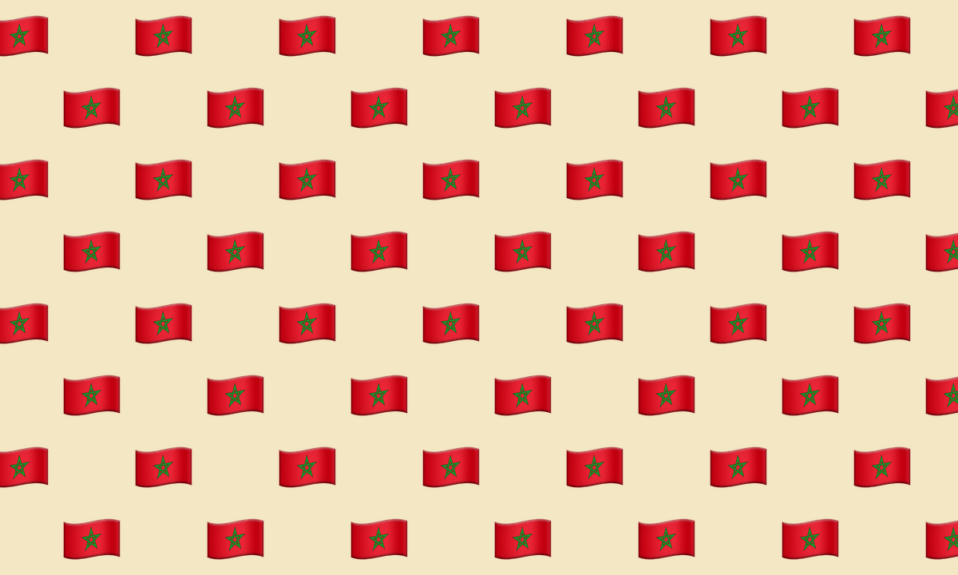What Does 🇨🇩 Flag: Congo – Kinshasa Emoji Mean?
The 🇨🇩 flag: Congo – Kinshasa emoji represents the flag of the Democratic Republic of the Congo. Here are several possible meanings of the 🇨🇩 flag: Congo – Kinshasa and how it can be used:
-
National Pride: The 🇨🇩 flag emoji can be used to show pride in the Democratic Republic of the Congo and its culture. It can be used to celebrate national holidays or events, or to express patriotism.
- “Happy Independence Day! 🇨🇩”
- “I’m so proud to be Congolese! 🇨🇩”
-
Representation of the Democratic Republic of the Congo: The 🇨🇩 flag emoji can simply be used to represent the Democratic Republic of the Congo or anything related to the country.
- “I’m planning a trip to 🇨🇩 next year!”
- “Have you tried Congolese cuisine? It’s delicious! 🇨🇩”
-
Symbol of Peace: The light blue color in the flag represents peace. The 🇨🇩 flag emoji can be used to convey a message of peace or to express a desire for peace in the world.
-
Unity and Progress: The yellow star in the flag represents unity and progress. The 🇨🇩 flag emoji can be used to symbolize unity among the Congolese people or to express hope for progress and development in the country.
-
Cultural Appreciation: The 🇨🇩 flag emoji can be used to show appreciation for Congolese culture, music, art, or any other aspect of the country’s rich heritage.
The 🇨🇩 flag: Congo – Kinshasa emoji is a symbol of national pride, unity, and peace. It can be used to celebrate the Democratic Republic of the Congo, express cultural appreciation, or convey a desire for peace and progress. You can also find more emojis related to countries and cultures on our website, such as the 🇺🇸 flag: United States or 🇯🇵 flag: Japan emoji.
🇨🇩 Flag: Congo – Kinshasa Design
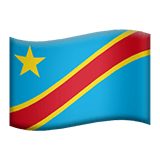
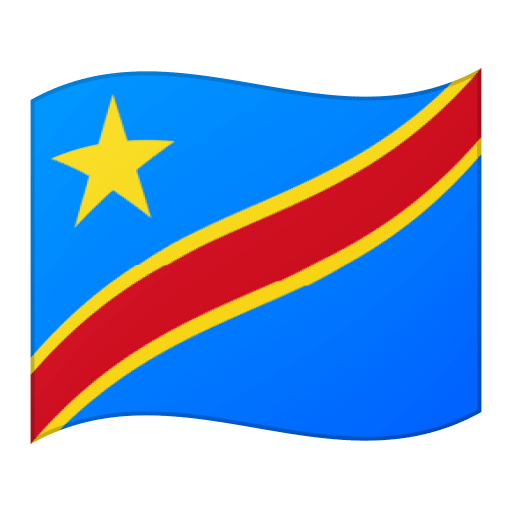
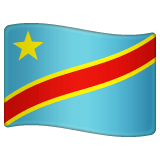
🇨🇩 Flag: Congo – Kinshasa Emoji Meaning From A Girl?
When a girl uses the 🇨🇩 emoji, it typically indicates one of the following meanings:
-
National Pride: Just like anyone else, girls may use the 🇨🇩 emoji to show pride in the Democratic Republic of the Congo and its culture. It can be used to celebrate national holidays or events, or to express patriotism. For example:
- “Happy Independence Day! 🇨🇩”
- “I’m so proud to be Congolese! 🇨🇩”
-
Representation of the Democratic Republic of the Congo: The 🇨🇩 emoji can simply be used to represent the Democratic Republic of the Congo or anything related to the country. It can be used in conversations about planning a trip to Congo or discussing Congolese cuisine. For example:
- “I’m planning a trip to 🇨🇩 next year!”
- “Have you tried Congolese cuisine? It’s delicious! 🇨🇩”
-
Symbol of Peace: The light blue color in the flag represents peace. The 🇨🇩 emoji can be used to convey a message of peace or to express a desire for peace in the world. For example:
-
Unity and Progress: The yellow star in the flag represents unity and progress. The 🇨🇩 emoji can be used to symbolize unity among the Congolese people or to express hope for progress and development in the country. For example:
-
Cultural Appreciation: The 🇨🇩 emoji can be used to show appreciation for Congolese culture, music, art, or any other aspect of the country’s rich heritage. It can be used in conversations about Congolese music, art, or any other cultural elements. For example:
When navigating a conversation where a girl has used the 🇨🇩 emoji, here are some tips on how to reply:
- Context matters: Consider the context of the conversation and the girl’s personality. This will help you understand if she used the emoji to show national pride, cultural appreciation, or any other specific meaning.
- Acknowledge and show interest: If you’re familiar with Congolese culture or have any knowledge about the Democratic Republic of the Congo, use that as an opportunity to engage in a meaningful conversation and show interest in her cultural background.
- Ask questions: If you’re unsure about the meaning or want to learn more about her perspective, don’t hesitate to ask questions. This shows that you are engaged and interested in understanding her better.
- Share your thoughts: If you have any personal experiences or thoughts related to Congo or Congolese culture, feel free to share them. It can help create a deeper connection and foster a more meaningful conversation.
- Be respectful: Remember to be respectful and open-minded when discussing different cultures and traditions. Avoid making assumptions or generalizations, and always approach the conversation with a genuine desire to learn and understand.
Examples of how girls typically use the 🇨🇩 emoji over text:
- “Happy Independence Day! 🇨🇩 Let’s celebrate our country’s freedom together!”
- “I’m planning a trip to 🇨🇩 next year! So excited to explore the beautiful landscapes and experience Congolese culture.”
- “The Congolese music scene is incredible! 🇨🇩 Any recommendations for songs or artists?”
- “The traditional Congolese attire is so colorful and stunning! 🇨🇩 I’d love to learn more about the different styles and their cultural significance.”
- “I’m feeling so proud of our Congolese heritage today! 🇨🇩 Let’s keep celebrating our rich culture and traditions.”
🇨🇩 Flag: Congo – Kinshasa Emoji Meaning From A Guy?
When a guy uses the 🇨🇩 emoji, it can have similar meanings to when a girl uses it. Here are some possible interpretations of the 🇨🇩 emoji from a guy’s perspective:
-
Pride and Patriotism: Just like anyone else, guys may use the 🇨🇩 emoji to show pride in the Democratic Republic of the Congo and its culture. It can be used to celebrate national holidays or events, or to express patriotism.
- “Happy Independence Day! 🇨🇩”
- “I’m proud to be Congolese! 🇨🇩”
-
Representation of the Democratic Republic of the Congo: The 🇨🇩 emoji can simply be used to represent the Democratic Republic of the Congo or anything related to the country. It can be used in conversations about planning a trip to Congo or discussing Congolese cuisine.
- “I’m planning a trip to 🇨🇩 next year!”
- “Have you tried Congolese cuisine? It’s delicious! 🇨🇩”
-
Symbol of Peace: The light blue color in the flag represents peace. The 🇨🇩 emoji can be used to convey a message of peace or to express a desire for peace in the world.
-
Unity and Progress: The yellow star in the flag represents unity and progress. The 🇨🇩 emoji can be used to symbolize unity among the Congolese people or to express hope for progress and development in the country.
-
Cultural Appreciation: The 🇨🇩 emoji can be used to show appreciation for Congolese culture, music, art, or any other aspect of the country’s rich heritage.
While the meanings of the 🇨🇩 emoji can be similar for both guys and girls, it’s important to consider the individual’s personality and the context of the conversation. Guys may have their own unique way of using the emoji, influenced by their personal style and communication style.
When trying to understand the meaning behind a guy’s use of the 🇨🇩 emoji, here are some tips on how to reply:
- Dive into the Context: Always look at the surrounding text and the mood of the conversation. A guy’s usage of the flag emoji can vary widely based on these factors.
- Ask with Curiosity: If you’re uncertain about what he meant, frame your question in a curious manner. For instance, “What does the Congo flag mean to you?”
- Humor is your Ally: More often than not, guys use emojis in a lighthearted or playful way. So, responding with humor or a funny gif can keep the conversation flowing.
Examples of how guys might use the 🇨🇩 emoji over text:
- “Happy Independence Day! 🇨🇩 Let’s celebrate our country’s freedom together!”
- “Planning a trip to 🇨🇩 next year! Can’t wait to explore the beautiful landscapes and experience Congolese culture.”
- “The Congolese music scene is on fire! 🇨🇩 Any recommendations for songs or artists?”
- “The traditional Congolese attire is so vibrant and stylish! 🇨🇩 I’d love to learn more about it.”
- “Feeling proud of my Congolese heritage today! 🇨🇩 Let’s keep celebrating our rich culture and traditions.”
Does 🇨🇩 Flag: Congo – Kinshasa Emoji Have A Hidden Meaning?
The 🇨🇩 emoji does not have any known NSFW or hidden meanings. It is simply used to represent the flag of Congo – Kinshasa. It is similar in usage to other flag emojis, such as 🇺🇸 for the United States or 🇬🇧 for the United Kingdom.
Looking For 🇨🇩 Emoji Combos?
Click above to generate some slangs
Related Emojis
Related emojis
🇨🇩Flag: Congo – Kinshasa Emoji Codes
| Unicode Code Point(s) | 127464-127465 |
| HTML Dec | 🇨🇩 |
| Hex Code | 1F1E8-1F1E9 |
| HTML Hex | 🇨🇩 |
| CSS | 1F1E8 1F1E9 |
| C, C++ & Python | u1F1E8u1F1E9 |
| Java, JavaScript & JSON | u1F1E8u1F1E9 |
| Perl | x{1F1E8} x{1F1E9} |
| PHP & Ruby | u{1F1E8} u{1F1E9} |
🇨🇩Flag: Congo – Kinshasa Emoji In Other Languages
| German | :flagge_kongo-kinshasa: |
| Spanish/Castilian | :bandera_república_democrática_del_congo: |
| French | :drapeau_congo-kinshasa: |
| Japanese | :旗_コンゴ民主共和国(キンシャサ): |
| Korean | :깃발_콩고-킨샤사: |
| Portuguese | :bandeira_congo-kinshasa: |
| Italian | :bandiera_congo-kinshasa: |
| Persian | :پرچم_کنگو-کینشاسا: |
| Indonesian/Malay | :bendera_kongo-kinshasa: |
| Mandarin | :刚果_金: |


